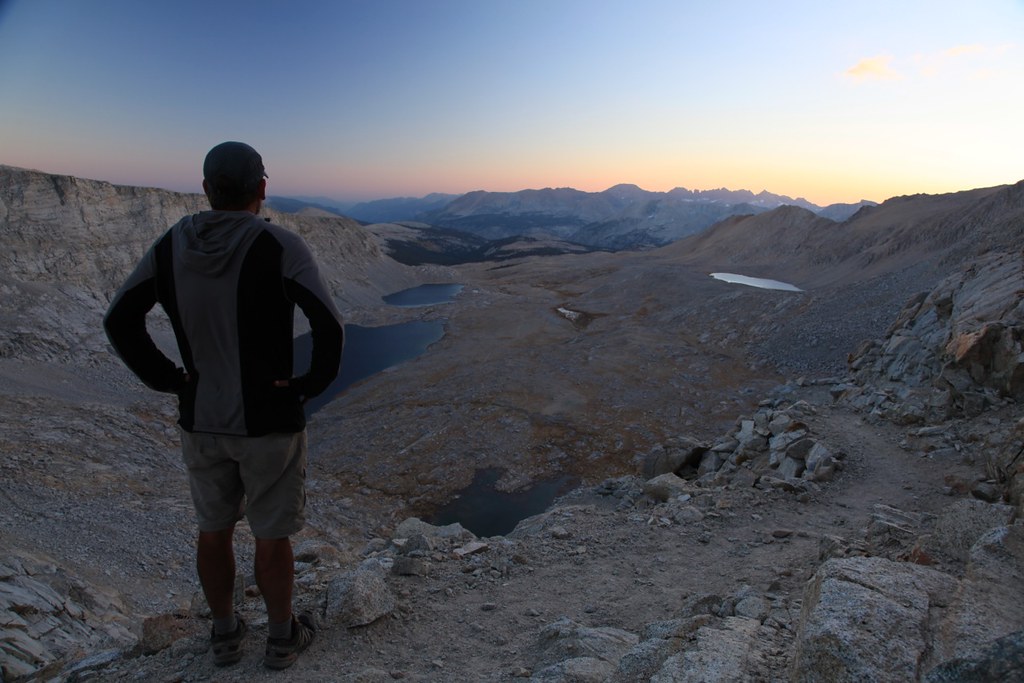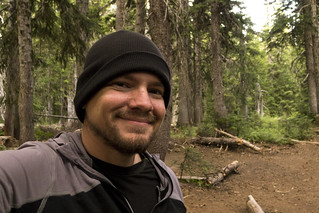| Mariposa Plus, by Gossamer Gear |
26 oz.
|
 I purchased two other packs before finally settling on the Mariposa Plus, by Gossamer Gear. There are a couple ways to save money on a pack, but none would have saved me more than getting more experience before buying my first one. My problem was that I didn't have a friend with a pack to borrow and I didn't lived near an outfitter that rented out gear (such as REI). I purchased two other packs before finally settling on the Mariposa Plus, by Gossamer Gear. There are a couple ways to save money on a pack, but none would have saved me more than getting more experience before buying my first one. My problem was that I didn't have a friend with a pack to borrow and I didn't lived near an outfitter that rented out gear (such as REI).
My first mistake was buying my first pack online. Since I didn't have an outfitter nearby, I didn't get fitted or get to try on multiple packs. Consequently, the pack didn't fit right and I didn't have enough experience to even realize that was the problem. All I knew was, after my first three miles, my shoulders were already getting sore and I was wondering what I got myself into.
All packs will seem comfortable when empty, so a good outfitters will give you sand bags to put inside the packs to simulate the full weight and will be able to tell you if it's fitted properly.
For my second pack, I drove ninety minutes to the nearest outfitter. It fit much better this time, but after a few trips I decided to reduce my gear weight and found backpacks that were 2 lbs. lighter, but just as comfortable. That's important to remember when looking for an ultralight pack. A one-pound backpack, with a total packed weight of 21 pounds, might be less comfortable than a five-pound backpack with a total weight of 25 pounds. Lightweight is important, but not more important than comfort.
Also, the comfort of a pack will drop the heavier it is. That might go without saying, but generally an ultralight pack will not hold more than 25 - 30 lbs. comfortably. Make sure to put enough sand bags in when testing one out. It might feel great at 25 lbs., but terrible at 35.
So, finally, three packs and $550 later, I had a pack I was happy with.
B U Y I N G O N L I N E
If you're lucky enough to have a knowledgeable local outfitter, who can answer all your questions, it's well worth it to support that business. That being said, there are a couple benefits to buying a backpack online other than finding a better price and seeing a wider selection.
The first that comes to mind is that I haven't yet seen a backpack in an outfitter that has an interchangeable suspension system. With some online companies, like Gossamer Gear and ULA Equipment, you can customize your backpack by selecting different size hip belts, torso lengths, and shoulder straps. If you're like me, and nothing seems to fit exactly right, you may find it beneficial to be able to order a pack with a large torso length, let's say, but have them attach their medium-size hip belt.
Also, many online outfitters have pages devoted to sales and clearance items that you can check periodically for deals, such as these pages at REI, Campmor, and Backcountry.com.
When buying online, checkout the return policy. REI, for example, will let you return any item for almost any reason, even if you have used it on the trail. If you live near an REI, or any store with a similar policy, that's a good place for a beginner to start.
B U Y I N G U S E D G E A R
Expect to spend at least $125 - $250 on a backpack, if you buy new. If that's not an option for you, start by looking for a used pack. Many people buy backpacking gear, but after one or two trips find out it isn't for them and want to recoup some of their money. It's like exercise equipment, you can find good deals on barely used items. Many outfitters sell used gear in their stores, or you can find a lot of used packs online at sites like GearTrade, eBay, or Craigslist.
When looking for used gear, remember that many outdoor gear companies will repair their products for free, for
life. If you find a good deal on a pack with some kind of defect, call the
manufacturer and see if they'll fix it for free. I recently sent
a backpack to Gregory Packs that had a pretty major flaw, a torn
zipper that left a giant hole exposed. I suspected this
would be covered under their lifetime warranty and it was. They fixed it free and sent it back. It only cost me $4 in shipping. Some people don't want to mess with the return process, or don't even know their pack has a lifetime warranty. Take advantage of that if you can.
G E T T I N G A
P R O P E R F I T
If you're unable to get to a
good outfitter to be sized properly, or if you'll be buying online, here's how to fit yourself for a pack.
First, get your torso
length. Have a friend measure your spine between two points. The
starting point is your C7 vertebra (the vertebra at the base of
your neck that protrudes when you touch your chin to your
chest). Next, imagine a horizontal line on your lower back going across the top of your hips (the Iliac Crest). Where this line intersects
with your spine is the ending point for your measurement. If you're like most adults, your torso length will fall between 16 and 22 inches.
Next, measure around your waist at the top of your hipbones. Those two
measurements will get you close to a perfect fit, without having
to try it on before ordering.
There are other factors that you
still won't know before trying it on, though. For example, how
it feels with a full weight, the placement of shoulder straps,
or the location of side pockets, which you want to be able
reach without taking off your pack. Check out the return policy
before ordering and if something isn't right, send it back.
Losing a few bucks in return shipping is much better than being
uncomfortable on the trail.
C A P A C I T Y
I didn't want to get into specific pack features on this post, because everyone has their preferences. There is one more thing you'll want to consider when buying your first pack, though, the total capacity. This is largely a personal preference as well, but a beginner might wonder how big is big enough. For me, 3,600 cu. in. (Or 59 L) of total capacity, is the right combination of being large enough to fit what I need, without being so large that I'm tempted to carry something I don't need. I can fit all my gear and a week's supply of food.
That's it for now. Don't forget to leave your comments or suggestions below! |
|
|
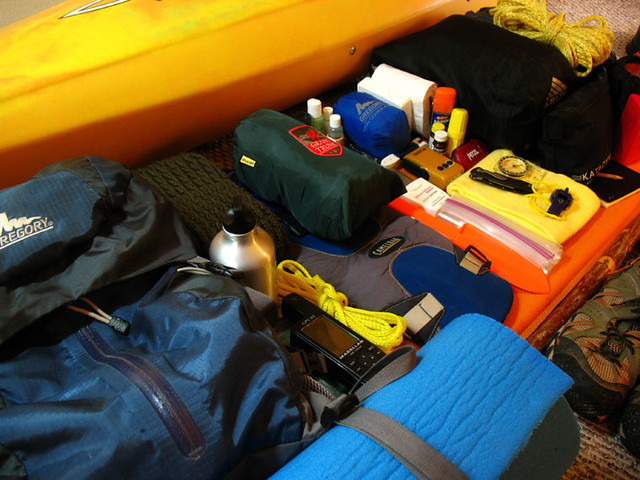
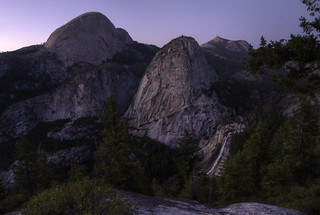
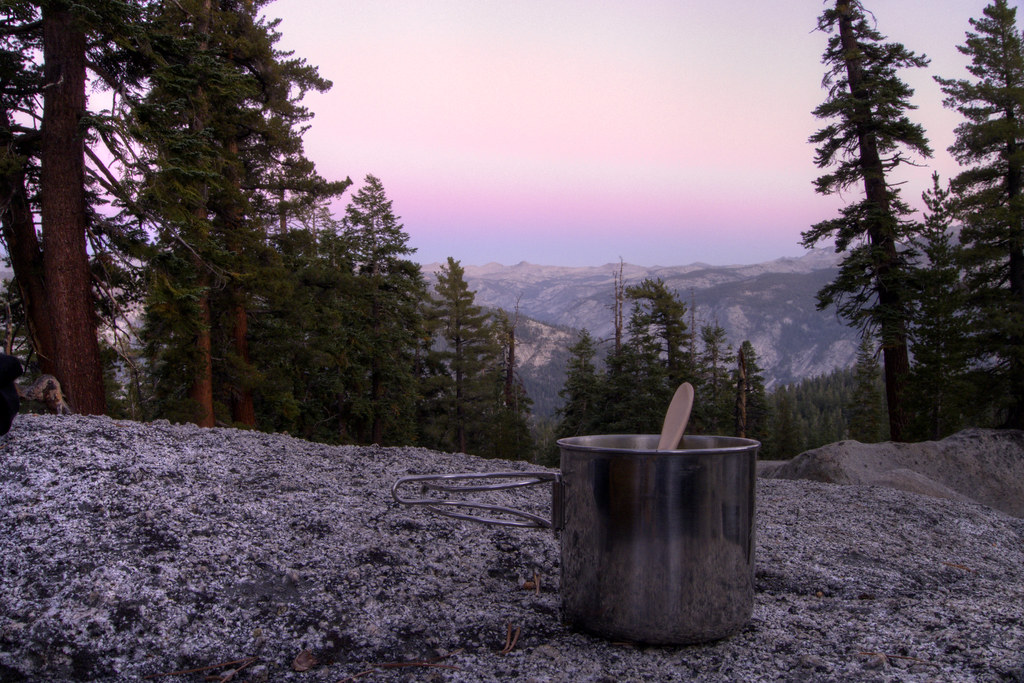
com-s.jpg)
com-s.jpg)
com-s.jpg)
com-s.jpg)
